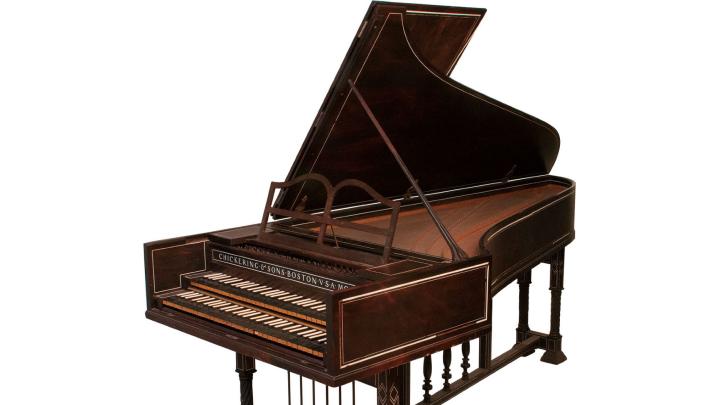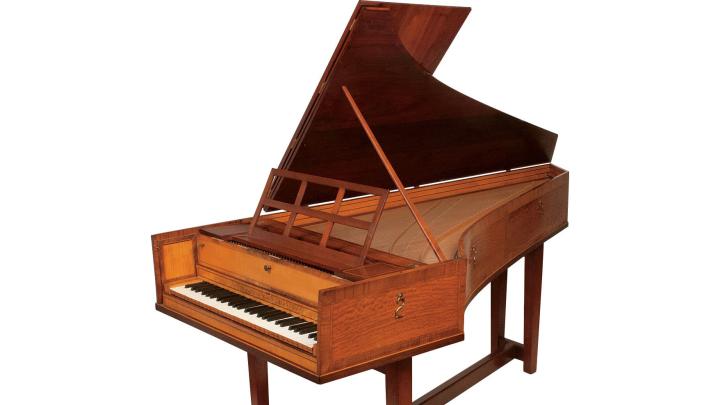In 1900, no one in America was building harpsichords. Pianos ruled, and that was that. Then in 1905, the French-born musician and instrument maker Arnold Dolmetsch (1858-1940) arrived in Boston, where he spent the next six years building clavichords and harpsichords with piano makers Chickering & Sons. Dolmetsch was “the man in front of the ‘early-music’ revival in the United States,” says Mariana Quinn, manager of Piano Technical Services (PTS) at Harvard. Early-music aficionados sought to build authentic reproductions of ancient instruments and to perform centuries-old pieces in ways true to their origins.
Two extraordinary harpsichords, one of which Dolmetsch built with Chickering in 1906, reside in the PTS workshop in Vanserg Hall, both in need of full restoration. Harvard acquired the Dolmetsch in 1929, and junior Ralph Kirkpatrick ’31, later an acclaimed harpsichordist and musicologist, concertized on it at Paine Hall the next year.
The 1906 harpsichord has two keyboards, or “manuals.” Dolmetsch used ebony for the natural notes and ivory for the accidentals, yielding a color scheme that reverses the conventional one. Its beautiful case, with ivory inlays, may be Indian rosewood, according to PTS senior concert technician Paul Rattigan.
Piano keys trigger hammers, but pressing a harpsichord key raises a jack with plectrum that plucks a metal string. A “choir” is a set of strings; Dolmetsch gave the Harvard instrument two eight-foot choirs and a four-foot choir (which sounds an octave higher), reviving the style of celebrated French harpsichord makers of the eighteenth century, such as Pascal Taskin.
Riding on the coattails of the early-music revival, Frank Hubbard ’42, A.M. ’48, and William Dowd ’44 built the second harpsichord, pictured above at left. The two young men independently pursued apprenticeships with disciples of Dolmetsch, then founded a harpsichord company in 1949. The instrument seen here, bearing serial number 1, is their first creation, modeled on a design by the Flemish Ruckers family of Renaissance harpsichord makers.
In his foreword to Hubbard’s Three Centuries of Harpsichord Making (1965), Kirkpatrick writes of hearing about “two graduate students in English…who had built what I believe was a clavichord....it became perfectly clear to me that Frank Hubbard and William Dowd did not in any way embody the enthusiastic ineptitude that so frequently is to be encountered among those persons infatuated with old instruments.”
Their maiden effort is a single-manual harpsichord with no pedals and a range of less than four and one-half octaves, or about half that of a piano keyboard. Like the Dolmetsch, the instrument has no home at Harvard: climate-controlled rooms suitable for delicate old harpsichords are in short supply.
Hubbard & Dowd built some of the best harpsichords in the world until the firm dissolved in 1958. Both men continued the craft afterward. Frank Hubbard was preparing to teach a class at Mather House on harpsichord making when he died in 1976. The Hubbard & Dowd legacy lives on in Framingham, Massachusetts, where Hubbard Harpsichords continues to build quality instruments.









